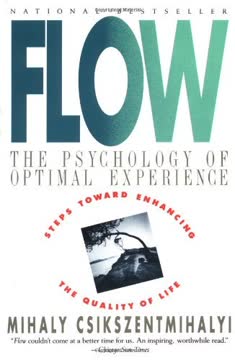Key Takeaways
1. Listening: The Foundation of Managerial Success
Listening is the foundation of success in managing people. As a gardener prepares the soil in order to allow the plants an ideal growing environment, listening well creates the ideal human growth environment, one where people feel capable, valued, and respected.
The four skills of listening are paying attention, inviting, questioning, and restating. Paying attention involves giving the speaker your full physical and mental focus. Inviting encourages the speaker to continue through verbal and non-verbal cues. Questioning involves asking genuine, curiosity-based questions to discover the speaker's thoughts and feelings. Restating summarizes the essence of the speaker's message in your own words to ensure understanding.
Effective listening creates trust and opens communication channels. It allows managers to understand their employees' perspectives, concerns, and ideas, leading to better decision-making and problem-solving. By actively listening, managers demonstrate respect and value for their employees, fostering a positive work environment where people feel heard and appreciated.
2. Clarify Your Workplace Vision and Core Competencies
For a gardener, creating a dream garden requires knowing what kind of a garden you want to create, and then what kinds of plants will help you to create it. For a manager, creating a great workplace requires getting clear about the workplace you're trying to create and what kinds of jobs and people will help you to create it.
Defining core competencies is crucial for creating the workplace you envision. These are the capabilities required of every employee and define "how work gets done" in your organization. To select core competencies:
- Find exemplars: Look at people in the organization who embody the workplace you want to create
- Look for clues: Note verbal indicators of positive aspects of "how work gets done"
- Work from a list: Use a provided list of possible core competencies as a starting point
Create clear job descriptions based on responsibilities rather than tasks. This approach helps ensure you hire people who are most capable of helping you create the workplace you envision. A good job description should include:
- Key responsibilities
- Required skills and knowledge
- Core competencies
3. Hire the Right People Through Scenario-Based Interviews
Scenario-based interviewing can give you much of the information—about an employee's actual skills, knowledge, and core competencies—you need to make better, more informed hiring decisions.
The scenario-based interviewing process involves three steps:
- Establish the scenario: Provide a verbal context for the candidate to answer "what-if" questions
- Ask a "what-if" question: Pose a question about how the candidate would handle a specific situation
- Stop and listen: Allow the candidate to answer without interruption or leading
This approach reveals how candidates think and act in real-world situations, providing more insight than traditional interview questions. It allows you to assess their problem-solving skills, communication abilities, and alignment with your organization's core competencies.
To take it further, create a job model simulation that allows candidates to demonstrate their understanding and experience directly. This can involve:
- Meeting with key people in the organization to discuss staffing requests
- Participating in a senior staff meeting to present findings and ask questions
- Proposing next steps for creating a staffing plan
4. Onboard Employees Effectively: Not Too Deep, Not Too Shallow
A gardener can dramatically help or hinder a plant's chances for survival, depending on whether he or she plants it too deep, too shallow, or just right. In the same way, how a manager gets an employee started can have a dramatic impact on his or her success.
Effective onboarding answers three critical questions for new employees:
- Who do I need to know? (Key relationships and roles)
- How do things get done around here? (Systems, procedures, and cultural norms)
- What's expected of me? (Performance expectations and goals)
Use the LearningPath approach to provide information and skills over time in a way your employee can absorb and use. This model includes:
- Awareness: Seeing the possibility of doing things differently
- Motivation: Recognizing the benefit of change
- New skills/knowledge: Acquiring the necessary capabilities
- Behavior change: Implementing the new skills or knowledge
Avoid "planting too deep" by overwhelming employees with too much information or unrealistic initial expectations. Similarly, avoid "planting too shallow" by not providing enough information, resources, or support.
5. Cultivate a Coach's Mindset for Employee Growth
Believing in your people's potential and wanting to help them succeed.
The coach's mindset is crucial for effective people management. It involves two key aspects:
- Believing in your employees' potential
- Wanting to help them succeed
To develop this mindset, use the following process:
- Recognize your initial belief about an employee
- Question that belief
- Gather new data about the employee's capabilities
- Test the new data in real situations
- Revise (or recommit to) your initial belief based on evidence
Maintaining a positive mindset requires "good mental hygiene" - reminding yourself of why you believe as you do and how it will help you and your employees. This approach creates a foundation for using management skills effectively and helps employees feel supported and motivated to grow.
6. Tailor Your Management Style to Individual Employees
The Social Style Model provides an approach to what to look for, and how to use what you see, so that you can manage each employee in the way that will be both most enjoyable and most helpful to him or her.
The Social Style Model identifies four primary styles:
- Drivers: Task-and goal-focused, need clarity and autonomy
- Expressives: Relationship-and forward-movement-focused, need interaction and freedom
- Amiables: Relationship-and team-focused, need support and structure
- Analyticals: Task-and information-focused, need emotional balance and reasonable time frames
Tailor your management approach to each style:
- Drivers: Help them look for others' perspectives
- Expressives: Encourage them to do reality checks
- Amiables: Support them in taking a stand
- Analyticals: Teach them to share their thinking
By understanding and adapting to each employee's style, you can create a more effective and harmonious work environment, leading to increased productivity and job satisfaction.
7. Make Clear Agreements and Provide Effective Feedback
Making Agreements: Clarify, Commit, Support.
The process of making clear agreements involves three steps:
- Clarify: Provide the information needed to complete the agreement well, while engaging the employee's commitment
- Commit: Ensure mutual understanding and agreement on specifics
- Support: Honor commitments, offer feedback, and maintain a coach's mindset
Effective feedback should be:
- Specific: Use "camera check" to focus on observable behaviors
- Timely: Provide feedback as soon as possible after the event
- Include impact: Explain why the behavior matters and its consequences
When giving corrective feedback, follow these steps:
- Introduce the topic
- Invite the employee's point of view
- Build on what you hear, making your feedback specific, timely, and including the impact
- Agree on next steps
Remember to provide positive feedback as well, recognizing and reinforcing good performance and behaviors.
8. Master the Art of Delegation for Team Growth
Delegation means transferring to an employee the responsibility for an area of work.
The Delegation Model consists of three steps:
- Prepare: Define the area of work and appropriate levels of autonomy
- Discuss/Agree: Share your preparation with the employee and reach mutual understanding
- Support: Honor commitments, offer feedback, and work to increase employee autonomy over time
To delegate effectively:
- Be clear about the scope of responsibility being transferred
- Define levels of autonomy for different aspects of the work
- Discuss and agree on how you'll work together during the transition
- Provide ongoing support and feedback
- Gradually increase the employee's autonomy as their capability grows
Effective delegation allows employees to demonstrate increasing levels of competence, freeing you to take on higher-level responsibilities. It's a powerful tool for building trust and developing your team's skills and confidence.
9. Coach Employees to Develop New Skills and Knowledge
Coaching is both helping a person decide how to acquire new skills and knowledge, and—in most cases—being a part of that learning process.
The Coaching Model involves three steps:
- Explore: Discuss the development opportunity and how to address it
- Commit: Ensure mutual understanding and agreement on the developmental plan
- Develop: Complete the coaching options, stay in touch, and maintain a coach's mindset
When teaching new skills, follow these key elements:
- Involve: Check initial levels of awareness and motivation
- Explain: Share your understanding or knowledge
- Practice: Offer opportunities to translate understanding into practical ability
- Integrate: Help the employee reflect and apply the learning to real life
Remember that learning happens within the learner. Your job as a coach is to support the employee's journey along the LearningPath, guiding them through awareness, motivation, skill acquisition, and behavior change.
10. Balance Manager and Employee Responsibilities
Just as you are responsible to your employees to provide the support and direction we've discussed throughout the book, so they have basic responsibilities to you and to the company.
Responsible employees:
- Are responsive to feedback: They listen, engage in dialogue about how to change, and make efforts to improve
- Keep their agreements: They do what they've committed to do
- Manage their own growth: They take primary responsibility for their own success and development
- Are good company citizens: They consider others' needs and preferences, as well as their own
Managers should:
- Make clear agreements about these responsibilities with employees
- Use the management decision tree to address performance issues
- Avoid being "held hostage" by employees who don't fulfill their basic responsibilities
By maintaining this balance of responsibilities, managers can create a more productive and positive work environment, focusing their energy on supporting and developing employees who are committed to their own success and the success of the organization.
11. Handle Terminations with Clarity, Respect, and Professionalism
Think of this as an operation to separate the person from your team: you want everybody to live!
When terminating an employee, follow these steps:
-
Prepare Carefully:
- Ensure you're committed to this course of action
- Craft a clear, simple termination message
- Consider possible employee reactions and how to handle them
- Consult with HR on legal considerations
-
Perform Impeccably:
- Choose an appropriate time and place
- Deliver the message clearly and concisely
- Avoid softening the message or engaging in dialogue
- Handle emotional reactions professionally
-
Follow Up Properly:
- Complete all necessary paperwork and processes
- Avoid speaking negatively about the terminated employee
- Communicate with your team about the change
- Reassure remaining employees of your fairness and expectations
After the termination, focus on rebuilding trust with your team by being consistent, balanced, and transparent in your management practices. Demonstrate that success on your team comes from fulfilling employee responsibilities and contributing positively to the organization.
Last updated:
FAQ
What's Growing Great Employees about?
- Employee Development Focus: Growing Great Employees by Erika Andersen is centered on transforming ordinary employees into extraordinary performers through effective management techniques.
- Gardening Metaphor: The book uses a gardening metaphor to illustrate that employees, like plants, need the right environment and care to thrive.
- Practical Strategies: It offers practical strategies for managers to create a nurturing workplace, emphasizing listening skills, setting clear expectations, and ongoing employee development.
Why should I read Growing Great Employees?
- Enhance Management Skills: The book provides actionable insights to improve management skills and employee performance.
- Versatile Application: Concepts are applicable to managers, HR professionals, coaches, and even parents, making it a versatile resource.
- Positive Workplace Impact: Implementing the strategies can lead to a more engaged and productive workforce, improving business outcomes.
What are the key takeaways of Growing Great Employees?
- Listening is Fundamental: Effective listening is crucial for management success, creating an environment where employees feel valued.
- Clarify Expectations: Managers should clearly communicate job expectations and organizational culture to help employees integrate smoothly.
- Ongoing Development: Continuous attention to employee growth is essential, with regular check-ins to support and address issues.
What is the "Gardener's Mind" concept in Growing Great Employees?
- Belief in Potential: The "Gardener's Mind" involves a manager's belief in their employees' potential and a desire to help them succeed.
- Self-Talk Importance: Managers should monitor their self-talk and beliefs about employees, as these influence management style and effectiveness.
- Positive Outcomes: Adopting this mindset fosters a supportive environment, leading to better employee performance and satisfaction.
How does Growing Great Employees suggest managers should listen?
- Active Listening Skills: The book outlines four key skills: paying attention, inviting, questioning, and restating, to better understand employees.
- Avoid Interruptions: Managers should allow employees to express their thoughts fully, building trust and respect.
- Restate for Clarity: Restating what an employee has said ensures understanding and shows that their input is valued.
What are the "who, how, and what" questions in Growing Great Employees?
- Who Do I Need to Know?: Helps new employees identify key relationships and individuals for success in their roles.
- How Do Things Happen Here?: Addresses systems, procedures, and cultural norms within the organization for better navigation.
- What’s Expected of Me?: Clarifies performance expectations and short-term priorities, ensuring role understanding from the outset.
What is the Social Style model mentioned in Growing Great Employees?
- Behavioral Differences Understanding: The model categorizes individuals based on assertiveness and responsiveness to understand different styles.
- Four Styles: Drivers, Expressives, Amiables, and Analyticals, each with unique strengths and weaknesses influencing work and interaction.
- Tailored Management Approaches: Recognizing an employee's Social Style allows managers to tailor their approach to support individual needs and enhance team dynamics.
What is the Delegation Model in Growing Great Employees?
- Three Steps: The model consists of Prepare, Discuss/Agree, and Support, ensuring clear responsibilities and employee empowerment.
- Define Responsibilities: In the Prepare step, managers define the area of responsibility and autonomy levels for successful task hand-off.
- Ongoing Support: The Support step emphasizes feedback and a coaching mindset to ensure continued employee development and success.
How does Growing Great Employees define effective feedback?
- Specific and Timely: Feedback should be specific, timely, and include the impact of the behavior to guide employee improvement.
- Encourages Growth: Constructive feedback focuses on behaviors rather than personal attributes, encouraging improvement.
- Regular Check-ins: Ongoing feedback and check-ins maintain accountability and support employee development, fostering open communication.
What are the responsibilities of employees according to Growing Great Employees?
- Responsiveness to Feedback: Employees should be open to feedback and engage in improvement discussions, showing commitment to growth.
- Keeping Agreements: Honoring performance and responsibility agreements is crucial for team dynamics and success.
- Managing Their Own Growth: Employees should take initiative in their development, seeking learning opportunities and addressing skill gaps.
How does Growing Great Employees suggest handling underperforming employees?
- Clear Agreements: Establish clear performance expectations to set a foundation for accountability and improvement.
- Feedback and Support: Provide regular feedback and support to help underperforming employees understand and address shortcomings.
- Decision Tree: Use the management decision tree to assess situations and decide on continued support or termination.
What are the best quotes from Growing Great Employees and what do they mean?
- "Listening is the foundation of success in managing people.": Emphasizes the critical role of listening in effective management for understanding employee needs.
- "Managing people is an important craft.": Highlights that effective management requires skill and attention, akin to gardening.
- "You can’t just throw them on the surface.": Illustrates the importance of proper onboarding to ensure employees receive the support needed to succeed.
Review Summary
Growing Great Employees receives mostly positive reviews, with readers praising its practical advice, clear frameworks, and engaging writing style. Many appreciate the gardening metaphor and find the "Try It Out" sections helpful. Managers at all levels find value in the book's guidance on hiring, coaching, and employee development. Some criticisms include repetitiveness and overuse of the gardening metaphor. Overall, readers recommend it as a useful resource for managers seeking to improve their leadership skills and grow their teams effectively.
Similar Books






Download PDF
Download EPUB
.epub digital book format is ideal for reading ebooks on phones, tablets, and e-readers.





